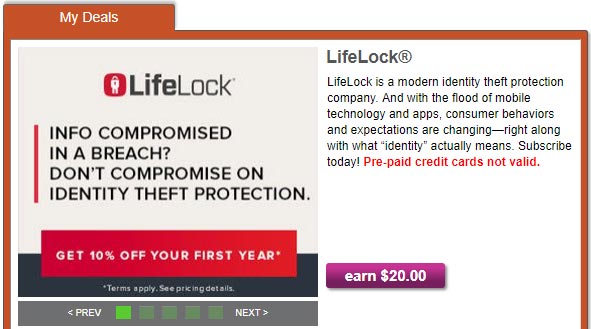Want to get regular scambusting updates? Sign up for e-mail or RSS updates.
Another one bites the dust. I keep hoping for a legitimate data entry job, but this one is not it. Dataentrybusiness.com cannot possibly fulfill its promises. It’s heavily promoted by top-paying-online-jobs.com, which should be ashamed of itself. It won’t, of course, because such people have no shame.
The long review: What are the claims?
Dataentrybusiness.com and its promoters claim it leads you to legitimate data entry jobs. All you have to do is pay the $49.00 “membership fee,” and you’ll get access to the “Members’ Area” containing all the secrets you need to rake in $200 per day or more for 45 minutes of daily work. Data entry jobs like this, and specifically dataentrybusiness.com either directly claim or imply the following:
- Companies pay you for filling out forms; this outfit even lists specific numbers:
If you complete 2 forms a day = $448 per week! (thats $1792/Month and $21,503 a Year!)
If you complete 4 forms a day = $896 per week! (thats $3584/Month and $43,008 a Year!)
If you complete 8 forms a day = $1792 per week! (thats $7168/Month and $86,016 a Year!) - You do the work in some sort of proprietary system, which you gain access to by paying your membership fee
- “We provide an online catalog of companies, organised into relevant categories (health, money, employment etc).
What is the truth?
Don’t be fooled by the hype, the testimonials, the pictures of cash, or the yellow highlighter. Here is the truth about those claims:
- This is a lie. Companies don’t pay you to fill out forms (at least not in this scenario.) They pay you IF someone clicks an ad you create AND THEN buys the product your ad is selling. Whether the clicker buys or not, YOU PAY a fee to Google for the click, if the ad is based in Google Adwords.
- You are not using a system that the company has hooked you up with. You’re using Google’s Adwords system and choosing companies from Clickbank, both of which everyone has access to for free.
- This is another lie. They don’t provide you anything except for instructions on how to set yourself up with clickbank and Adwords accounts—information freely available if you know where to look.
Here’s what’s really going on: You are filling out Google Adwords forms or affiliate links for businesses listed in Clickbank. There’s a lot the program promoters don’t tell you:
- If it’s based in Google Adwords, you’ll have to PAY for each form you fill out because you’re creating an ad to go in Google’s database. You pay Google to list your ad on sites like this one, in search results (that’s what “sponsored links” are), in Gmail screens, and elsewhere.
- You pay a per-click fee every time someone clicks on your ad.
- You only get paid if someone makes a purchase after clicking on your ad.
How many times have you clicked on an ad and not made a purchase? Yeah, me too. So now you can see how this “data entry job” is going to suck money from your wallet faster than you can say, “I want my money back.”
“But Joe, look at all the news outlets that have done stories on them. It must be legitimate if MSNBC is reporting on it.” See, the promoters are hoping you’ll see those news logos and think that. They think you’re as dumb as a box of rocks. I did detailed searches at 4/5 of the news organizations listed, NONE OF THEM did stories on this outfit. More about that later.
Numbers don’t prove anything
The part of this page that really gets my goat is the image claiming to show “how much you can earn completing forms.” Fill out 2 forms per day and make $448 per week? The world just doesn’t work that way. Maybe you could make that much with two forms, IF a given number of people clicked on it each day that week AND purchased whatever that ad is selling. And even then, it depends on you choosing the right company to create ads for. Make ads for strawberry-scented butt-rash cream and you might be stuck with a 10-cent commission per sale. How many tubes of cream do you have to sell to make $448 per week at that rate?
I’m so disgusted by these guys that I felt I had to take action. I wrote to the legal departments of cnn.com, msnbc.com, Wired News, and the New York Times online and gave them a heads-up that someone is using their logos as endorsements. It felt really good, too.
You know what felt even better? Finding the dirt on them at the Better Business Bureau. Read the whole report; I can’t do it justice here:
Complainants allege false or deceptive advertising practices, dissatisfaction with the offer which resulted in refund requests, or failure to honor their money back guarantee. Some buyers complain the company misrepresents the income potential, or fails to disclose that there are additional costs after the membership is purchased. All complainants claim they experience difficulty contacting the company in regards to their refunds.
Were you considering Dataentrybusiness.com and read this review as part of your research? Have I saved you from flushing $50 down the loo? If so, we’d love to hear from you in the comments. Come to think of it, we’d love to hear from you in the comments, anyway.
Looking for a real way to make money online?
Then purchase our book. We break down the steps you need to take to find a real, paying job that you can do from the comfort of your home. Best of all, you set the price you can afford to pay. Stop dealing with scams and find the best way to legitimately work from home. Click here to learn more about our book.
What YOU can do
Scams like this one thrive on ignorance and emotional appeal. You can help put these guys out of business by spreading the word about this post and the dirty tricks of scammers that want to kick you when you’re down. Help us get the word out:
- Share this post by clicking on the “Share This” link below
- Learn more about this and other online scams by reading the Related Posts below
- Report fraudulent activity at Scam Victims United and to your local police




